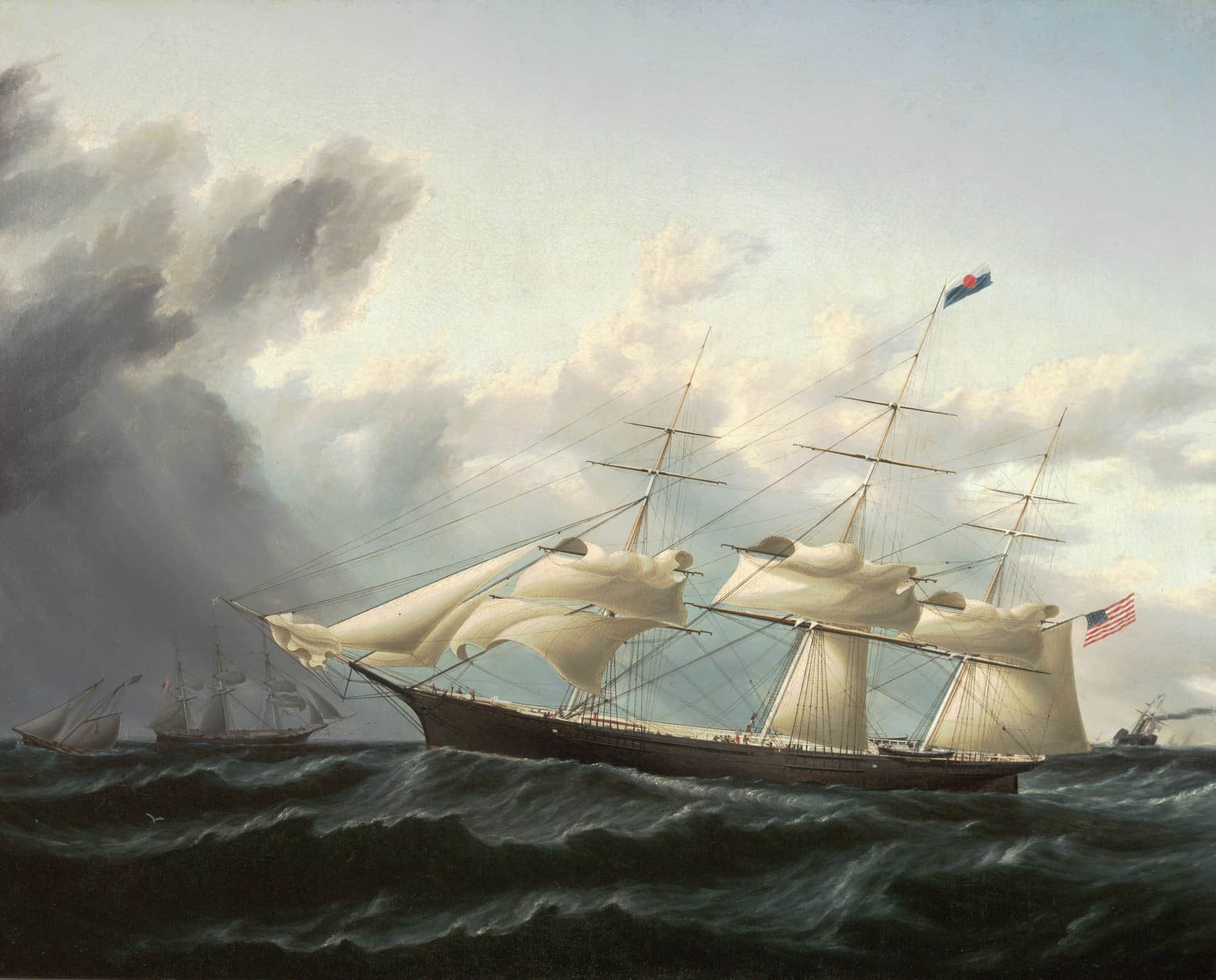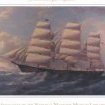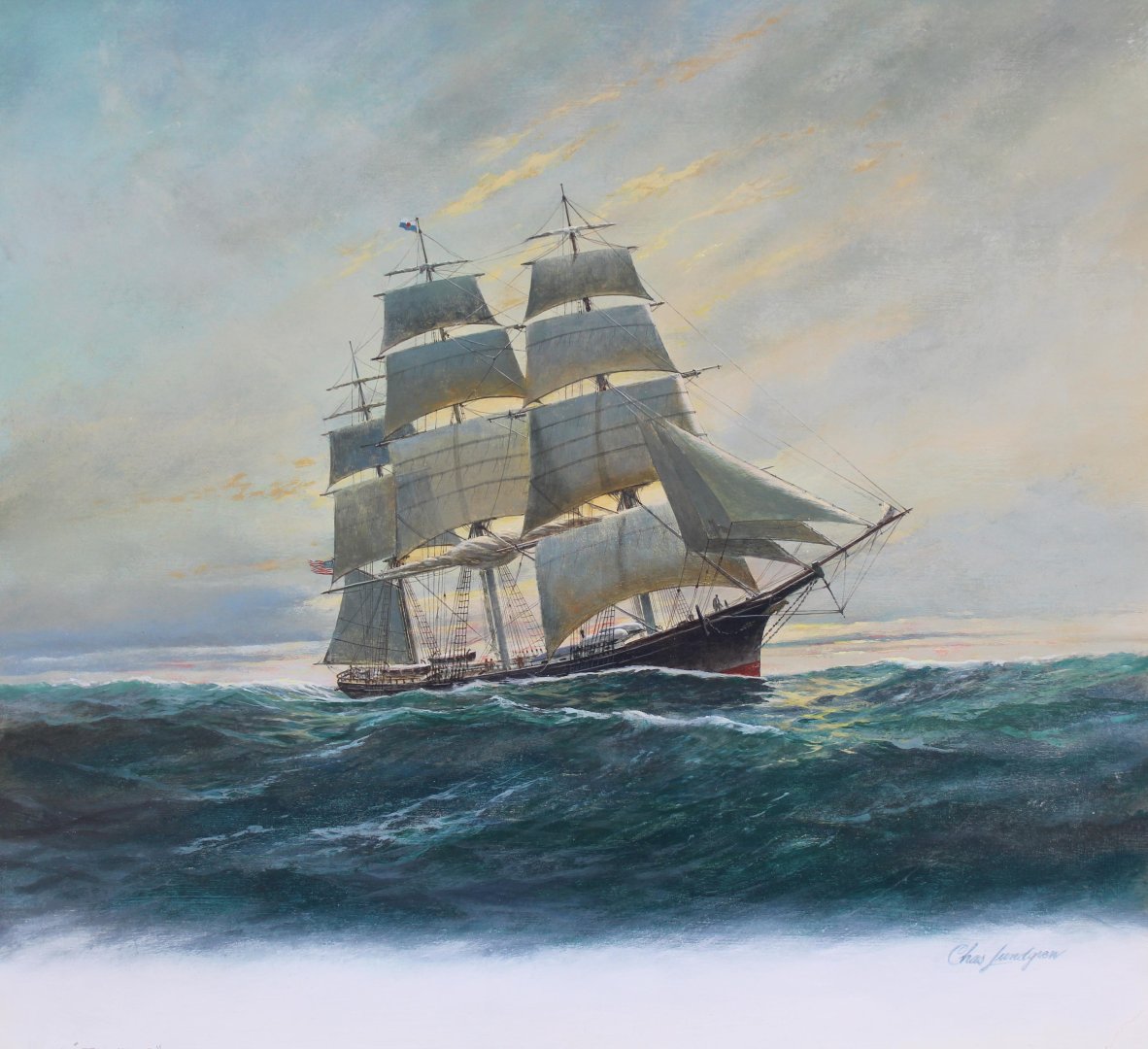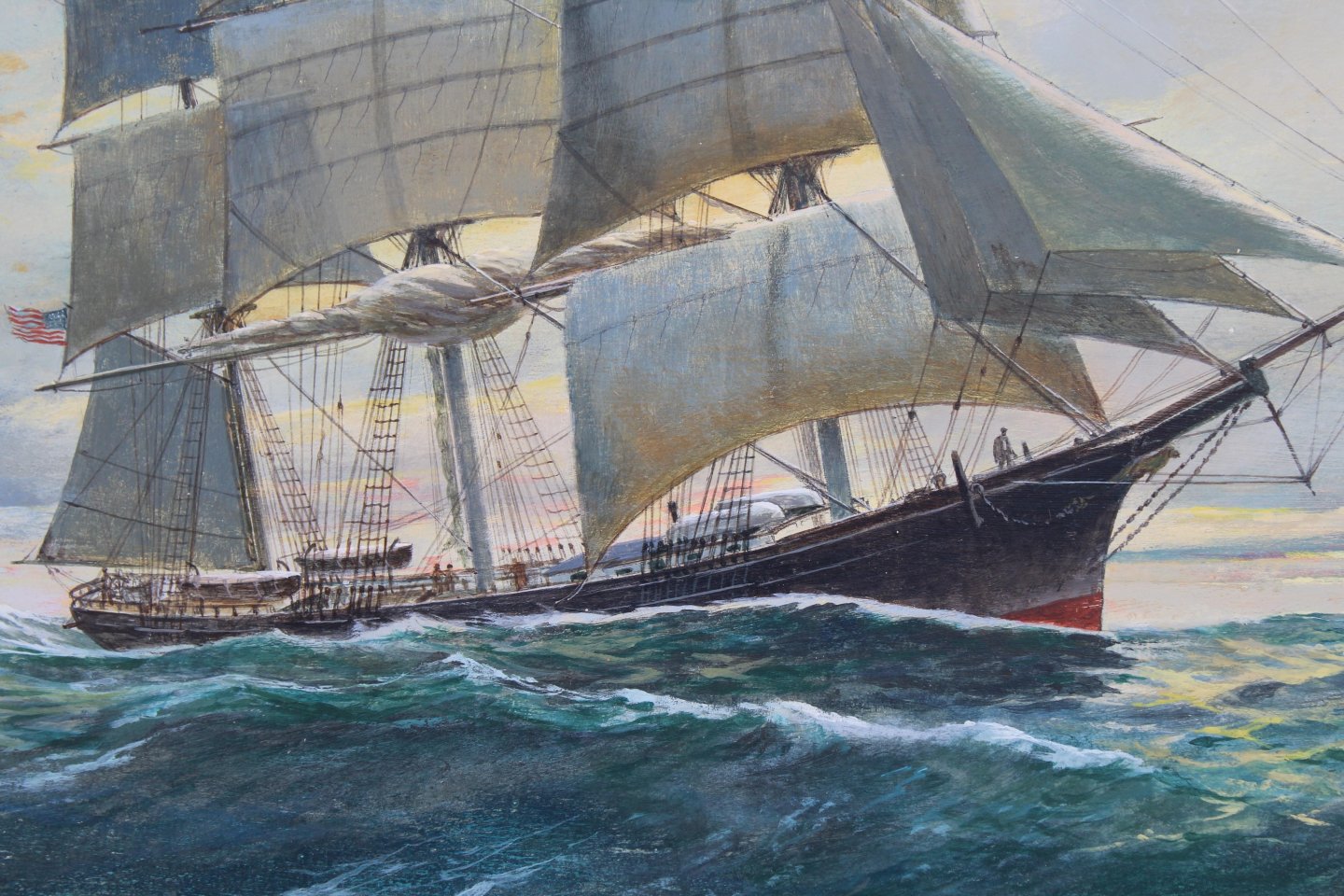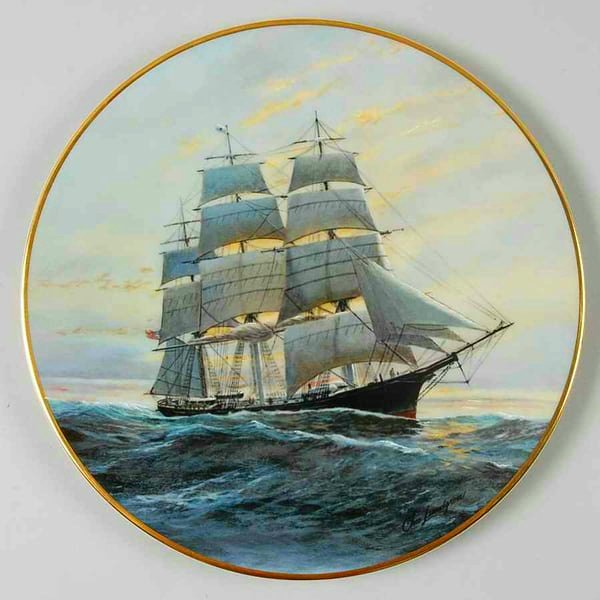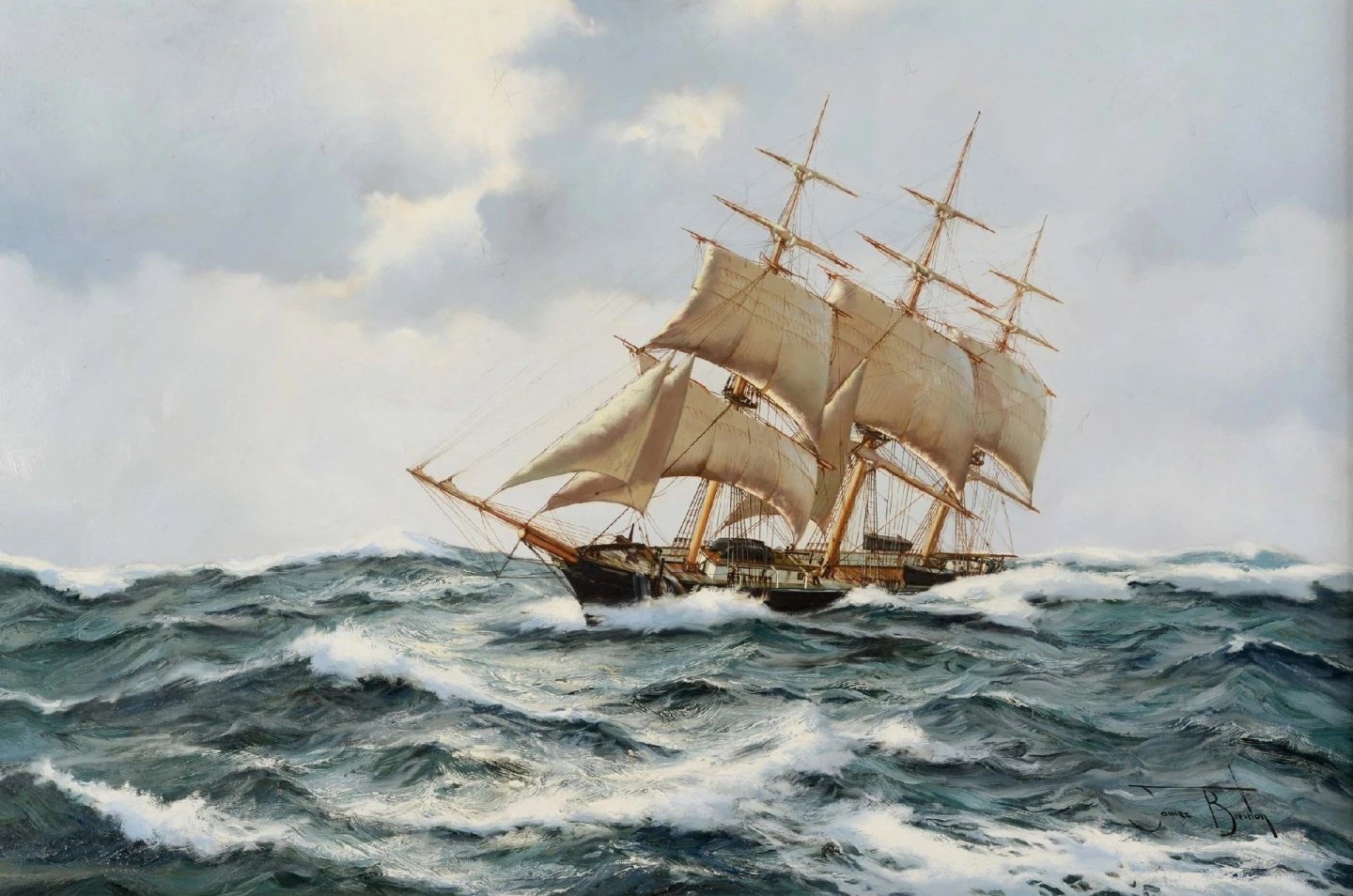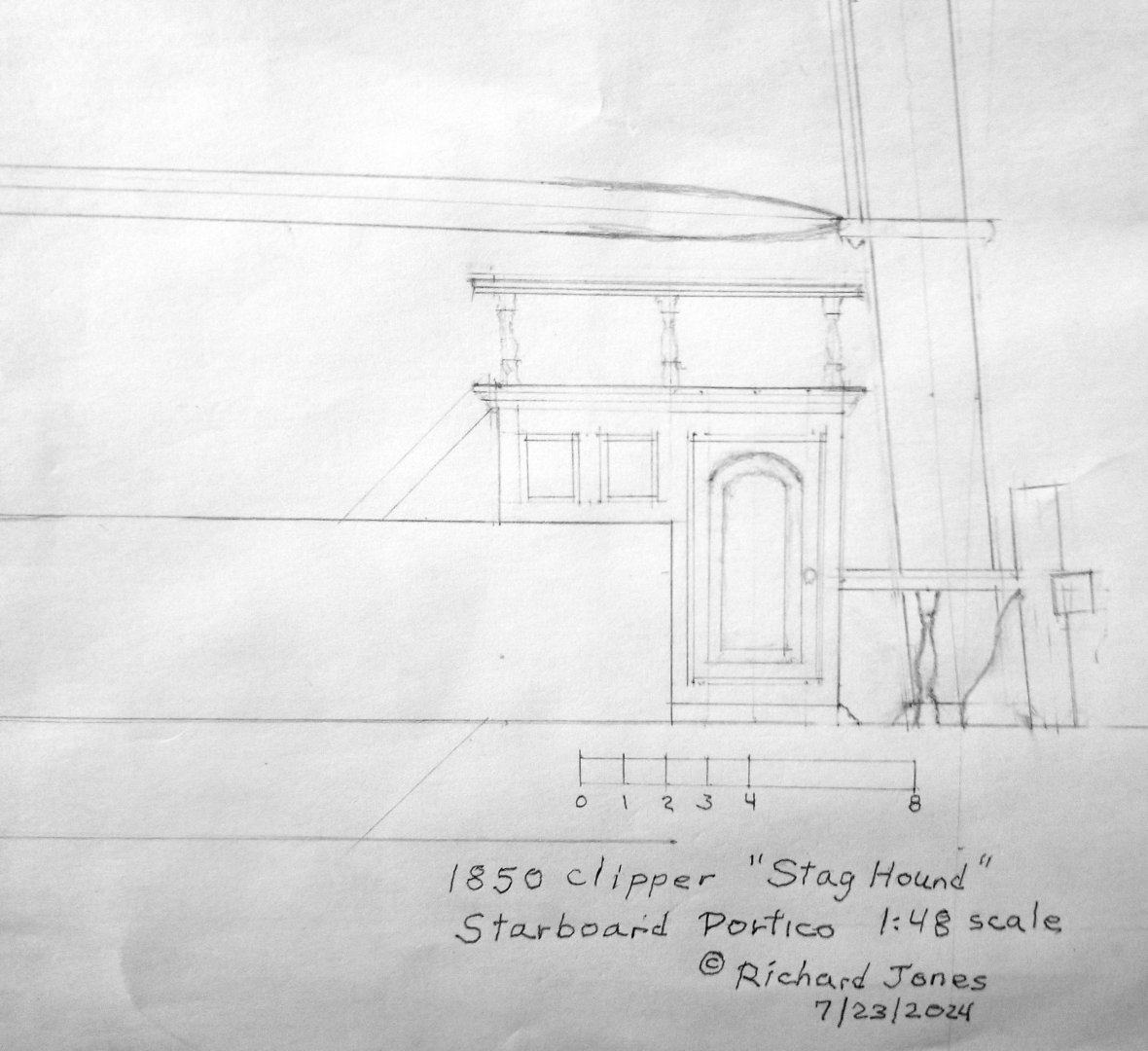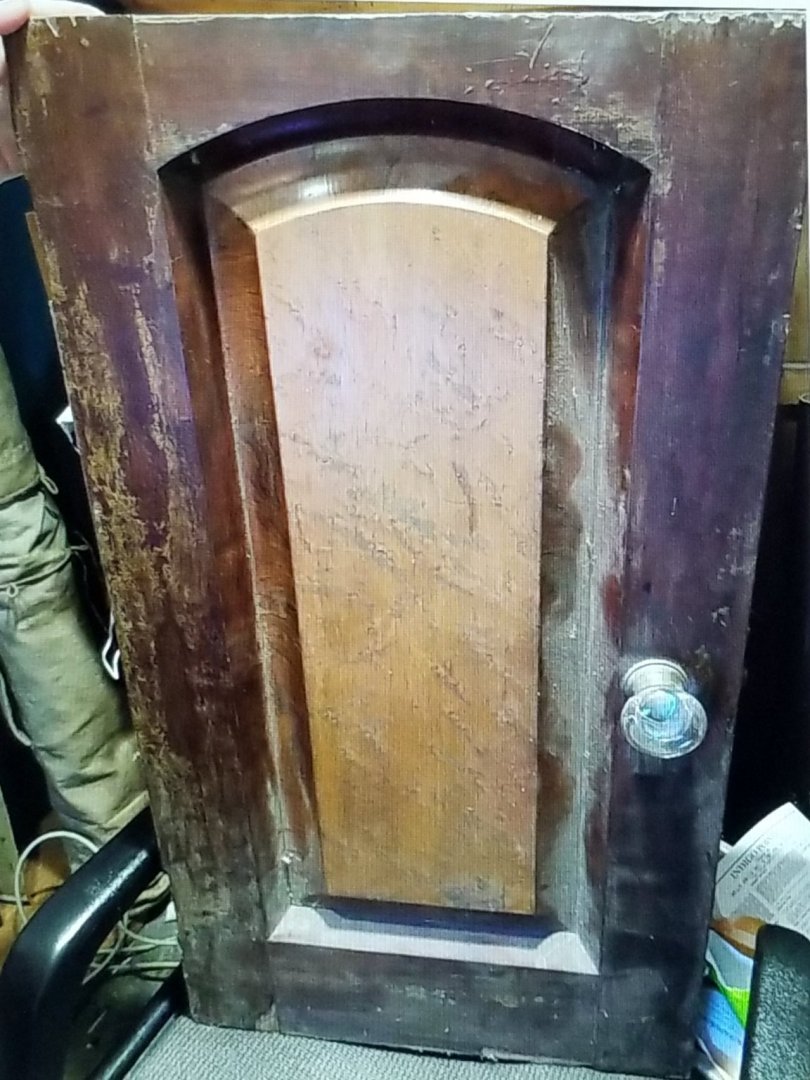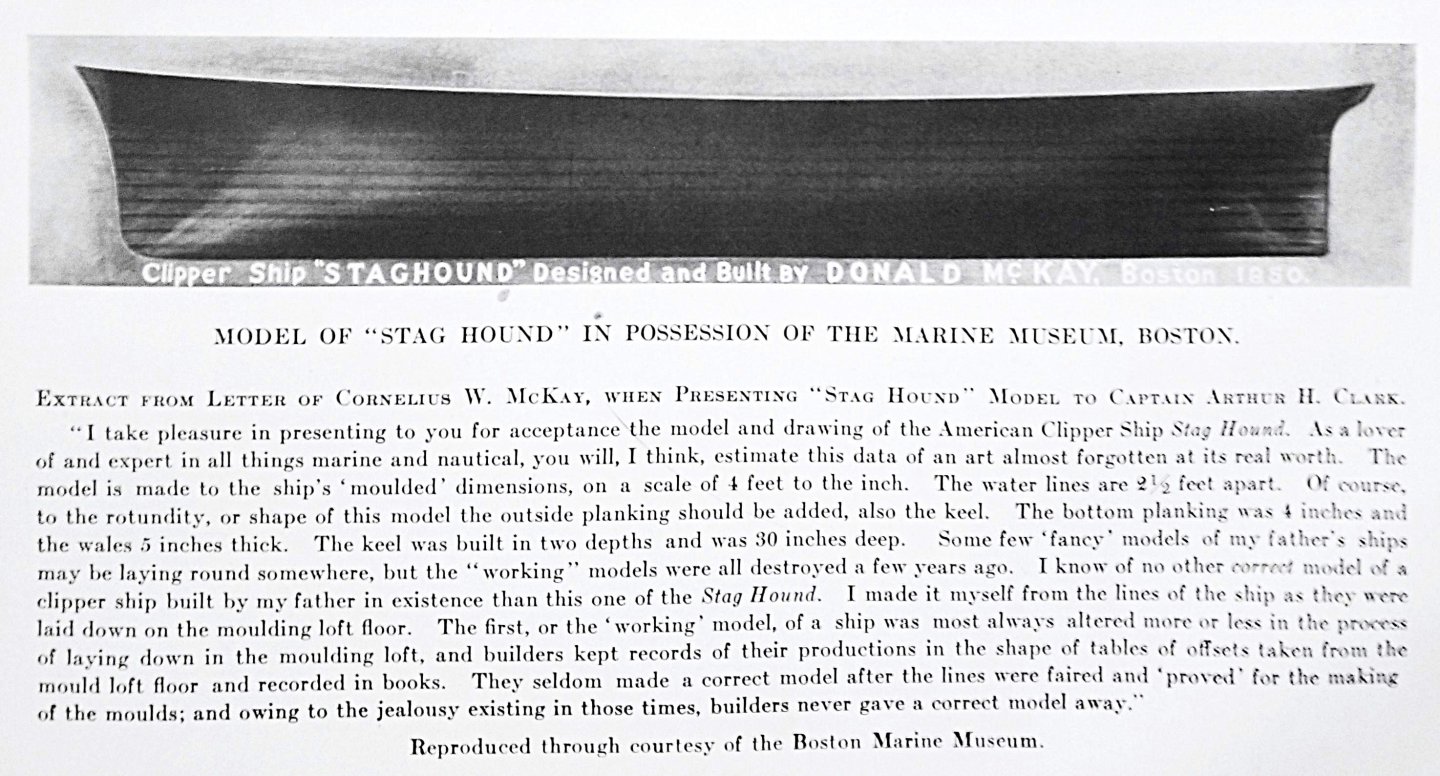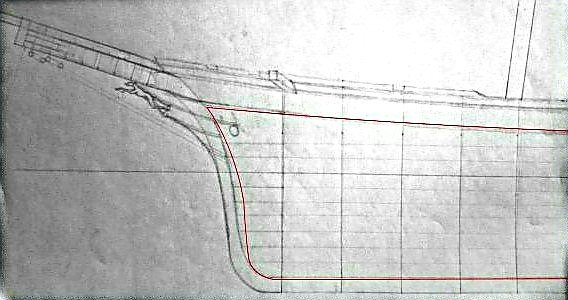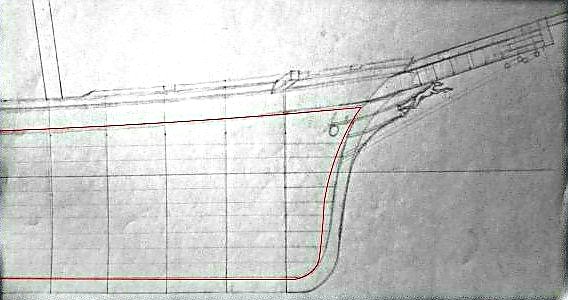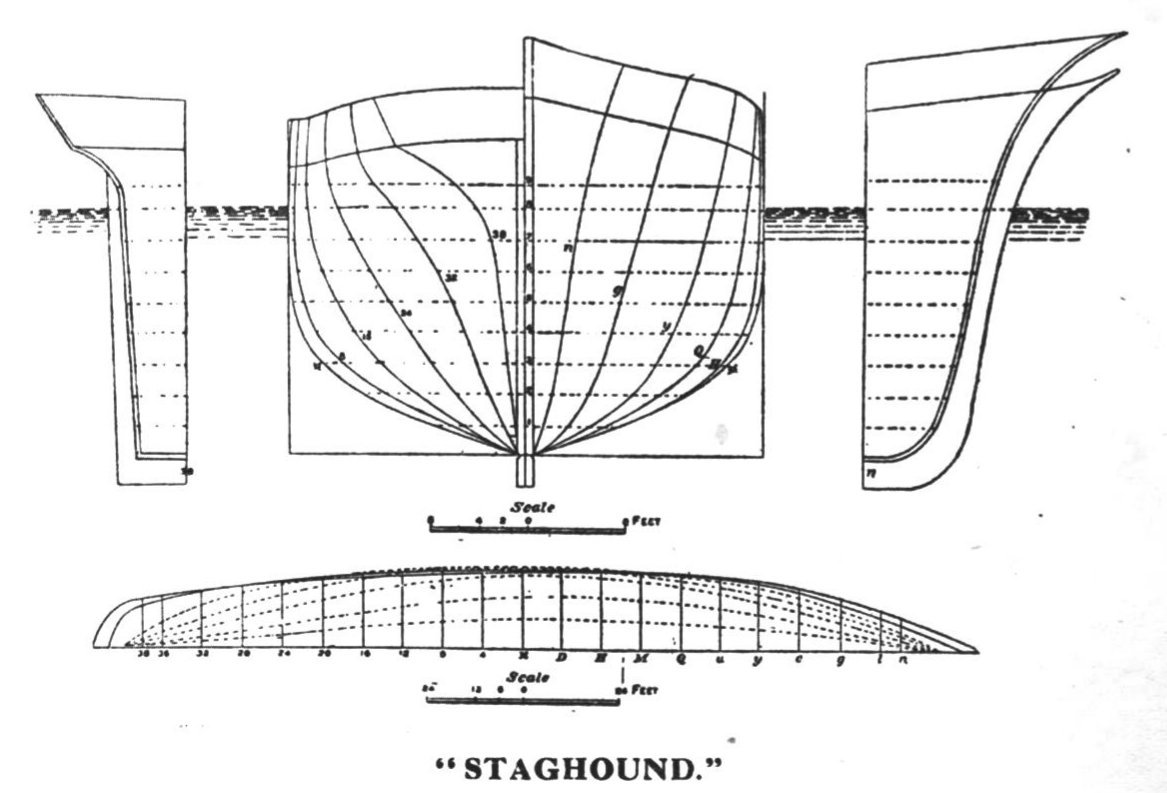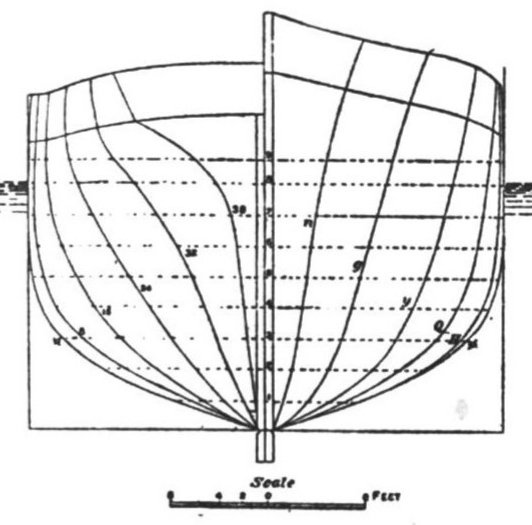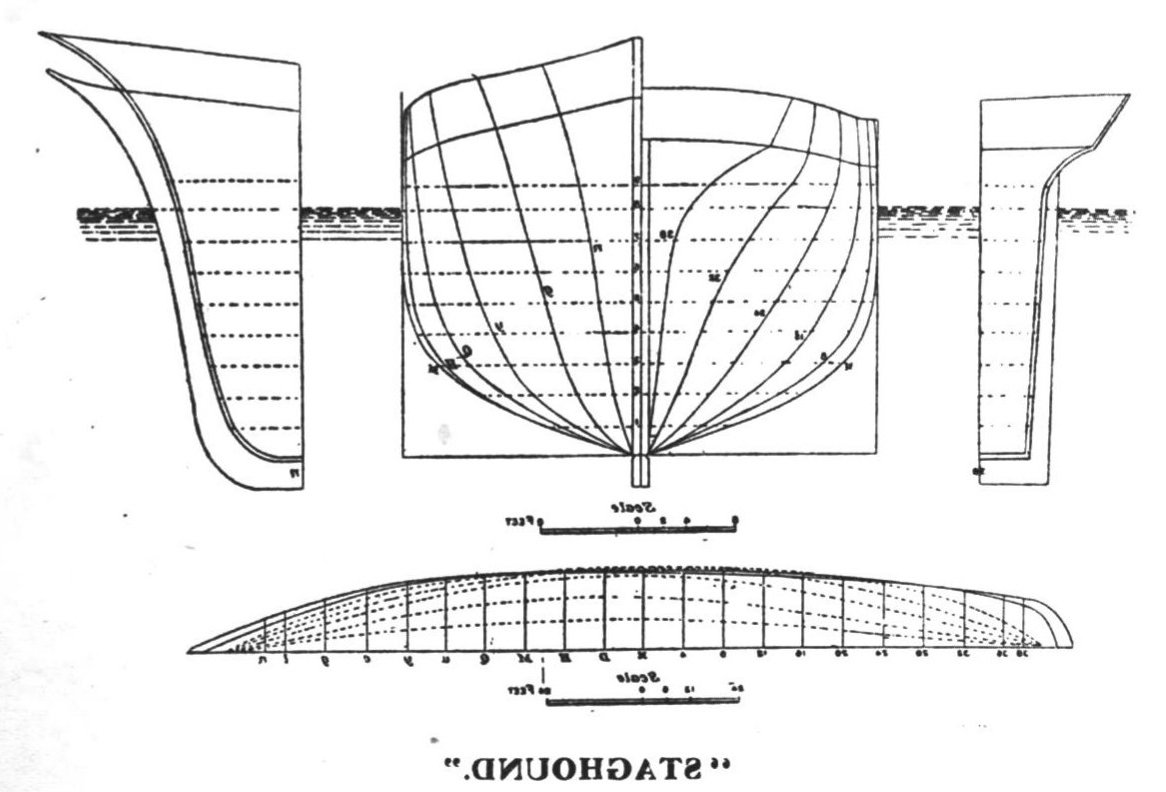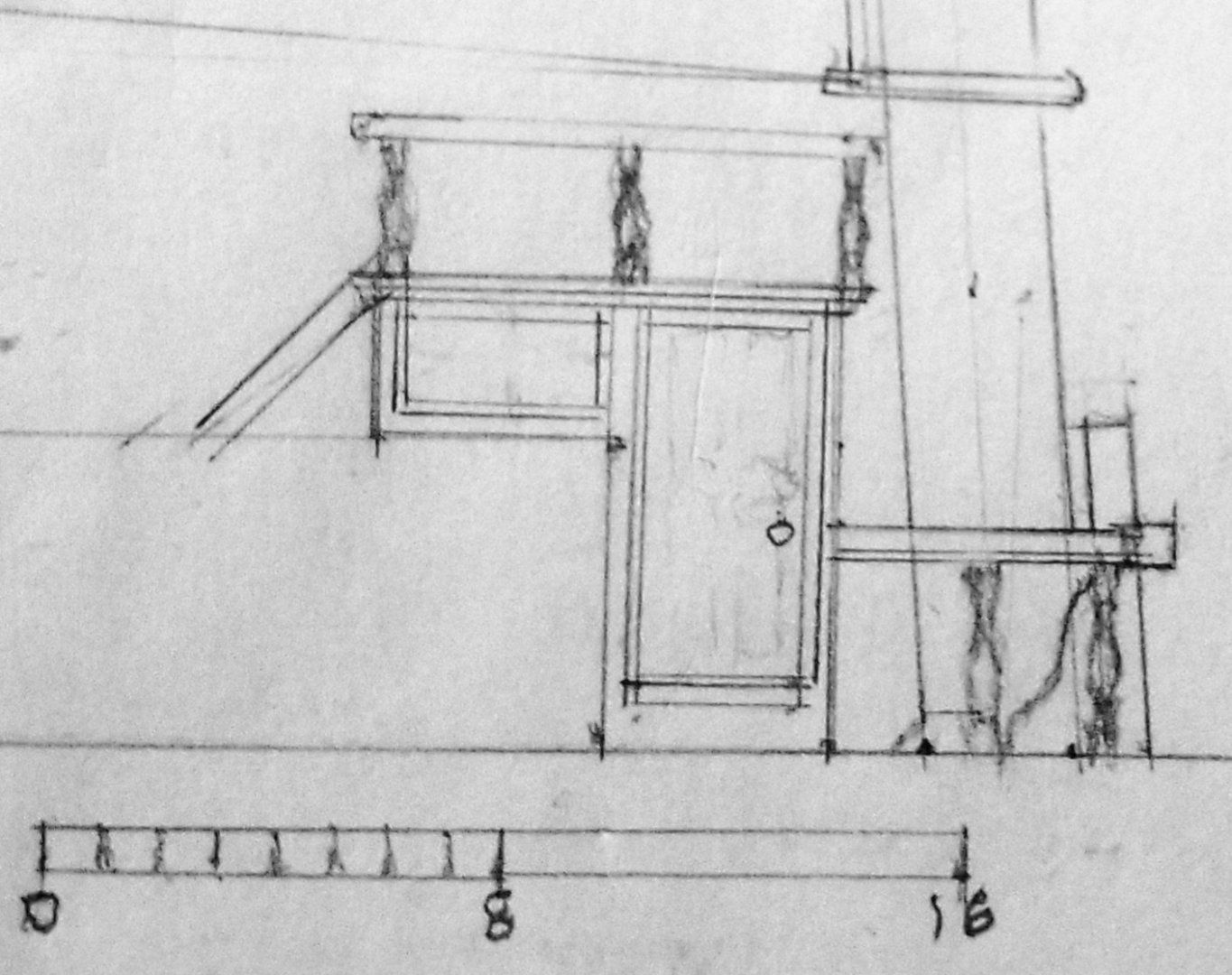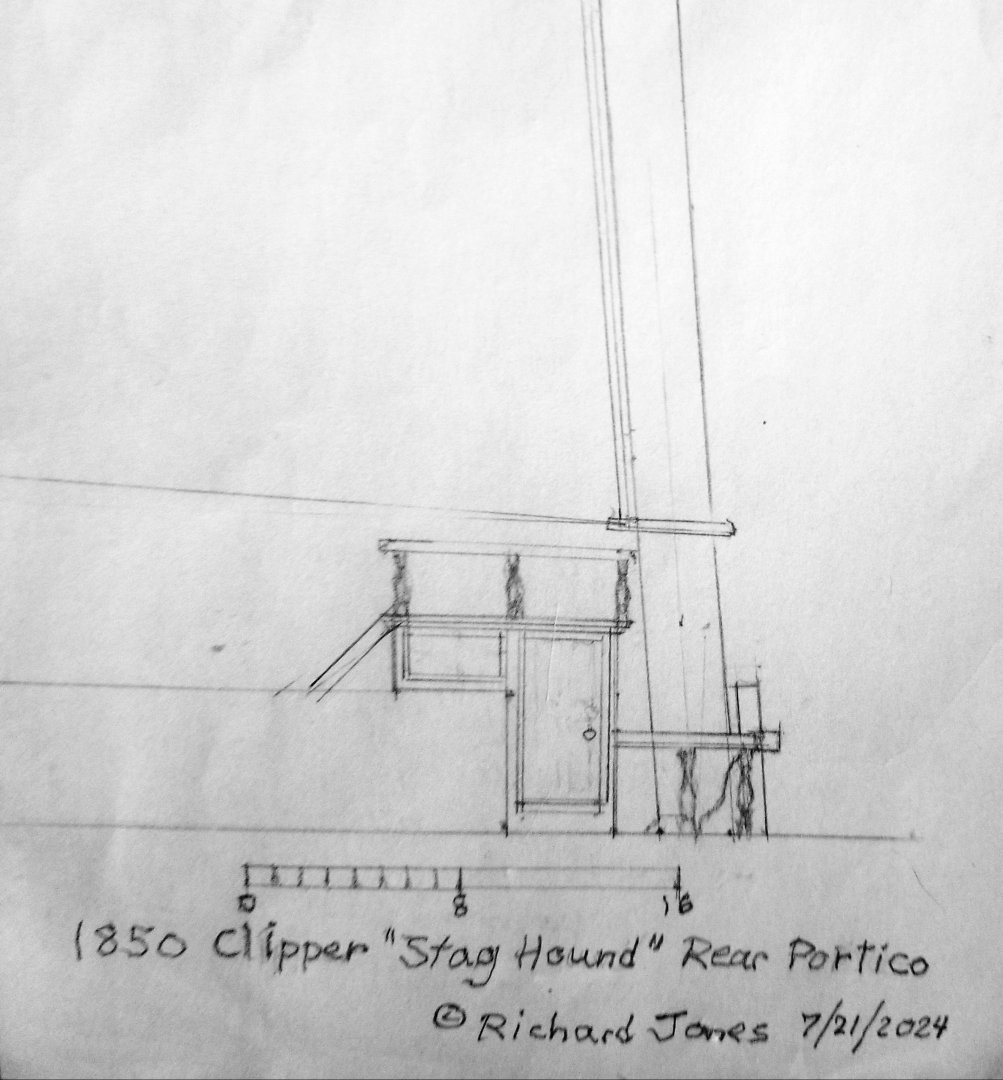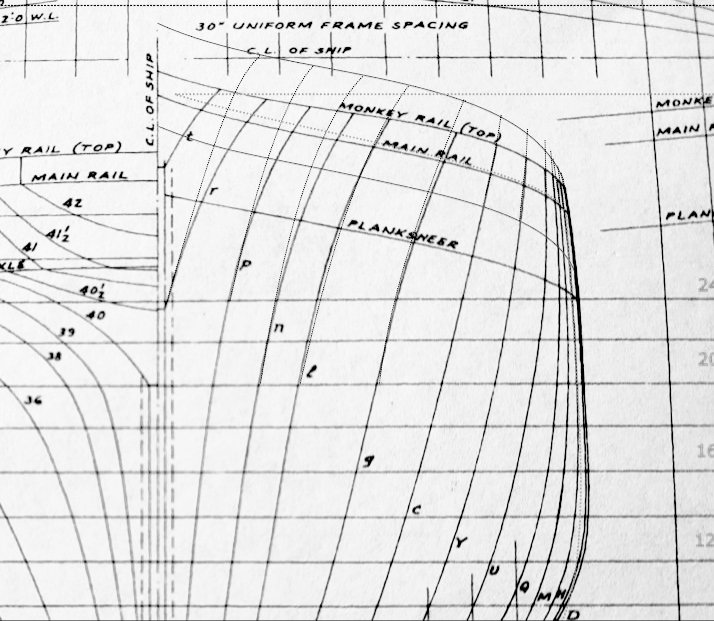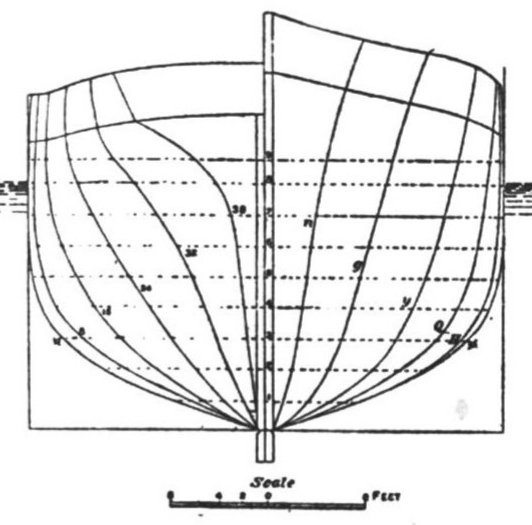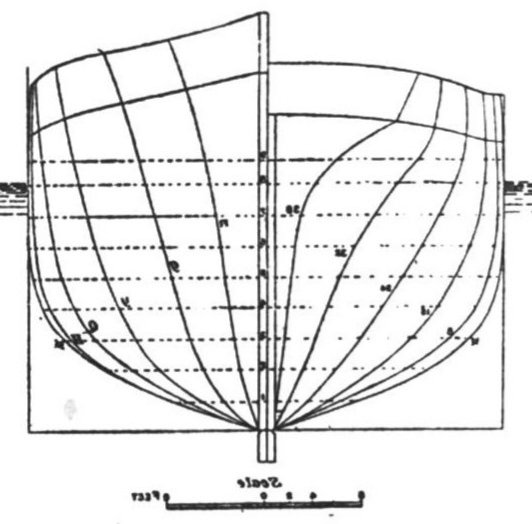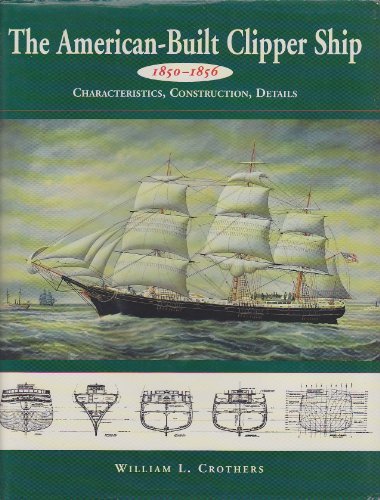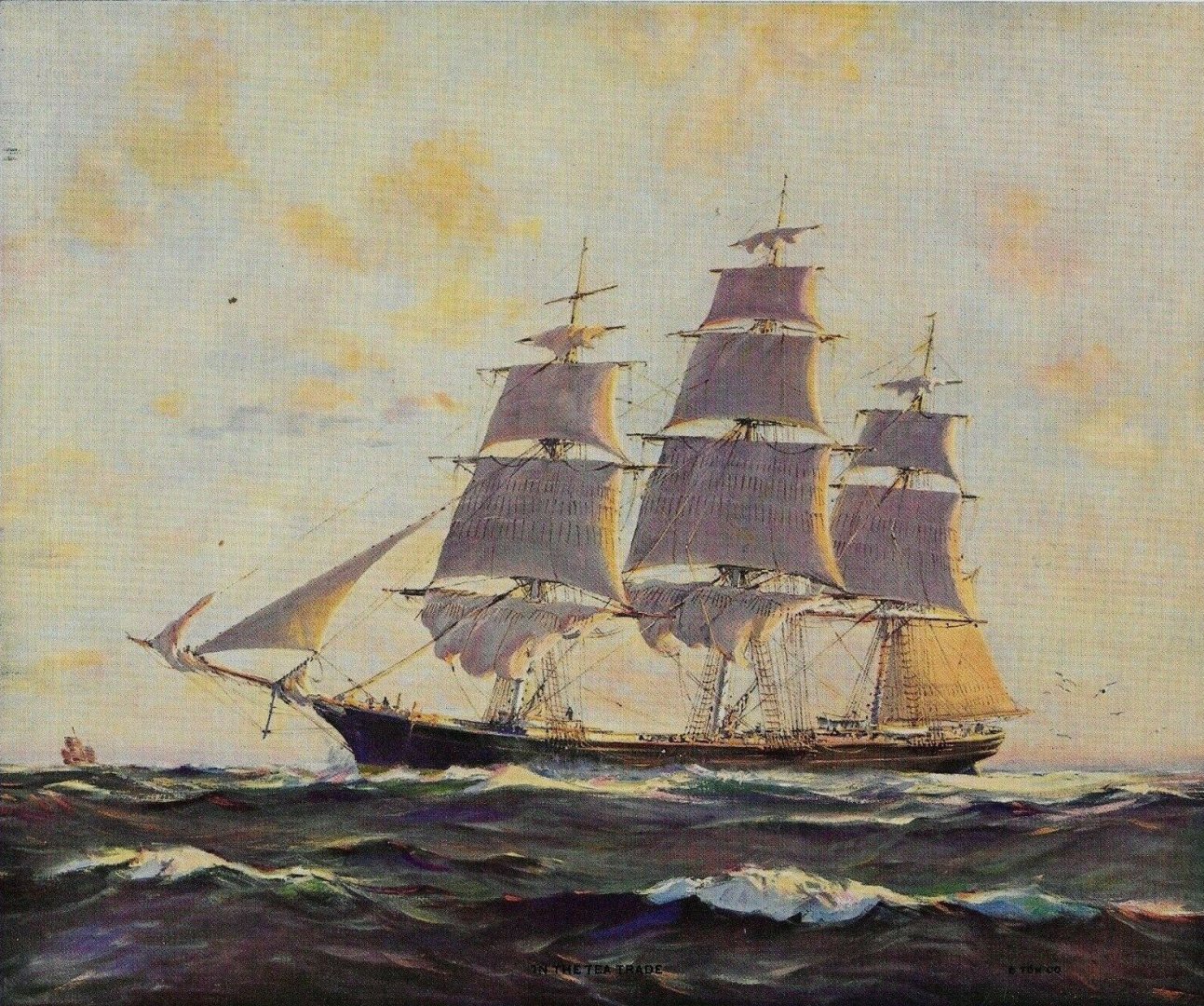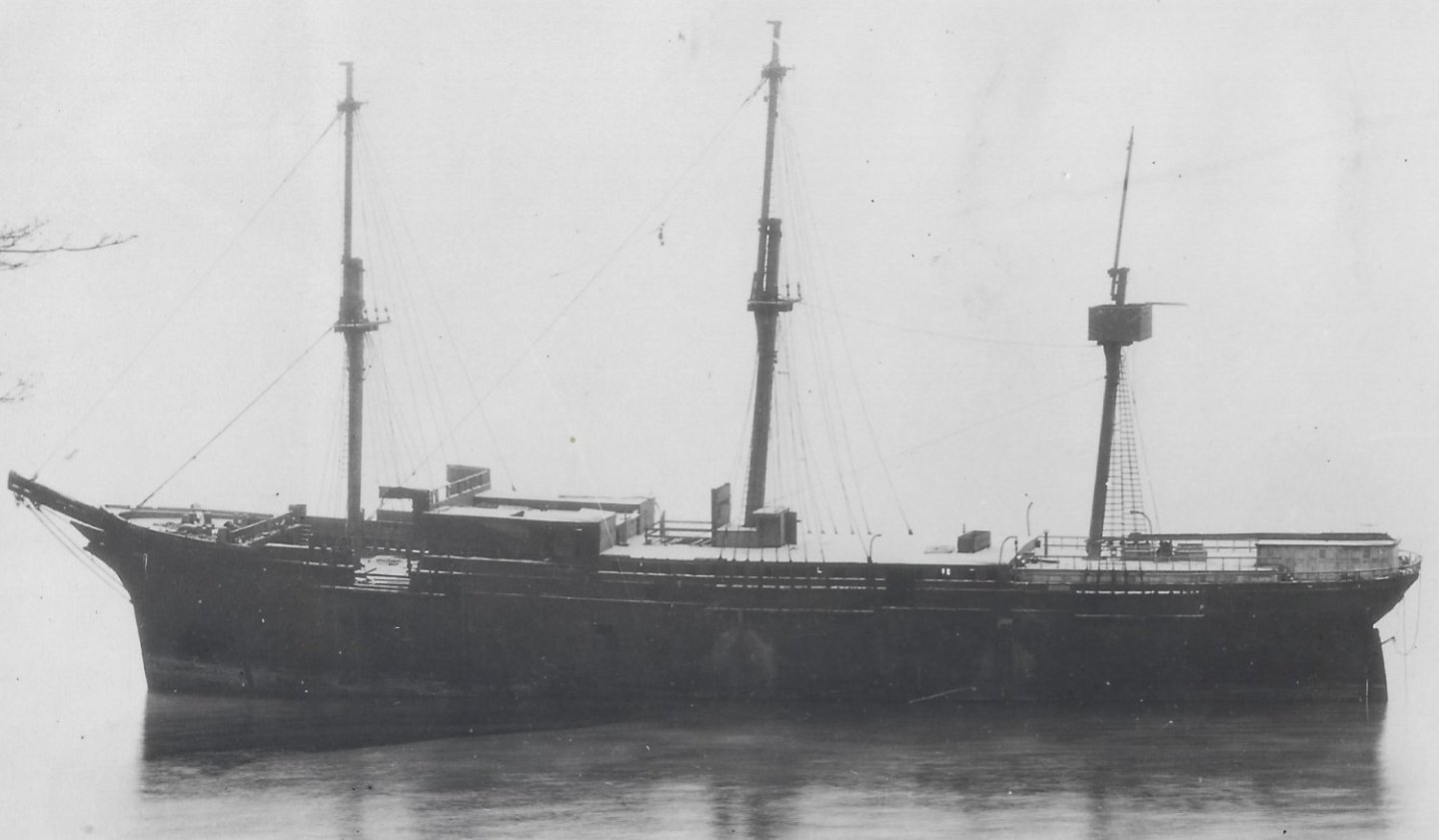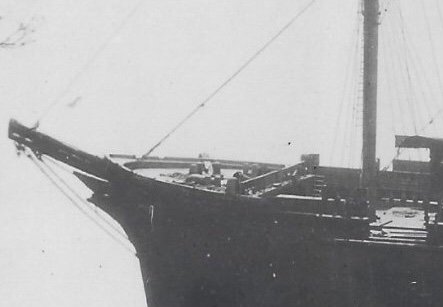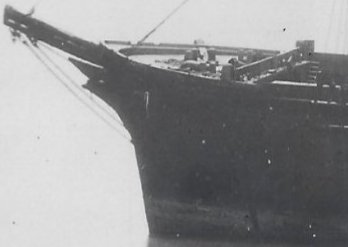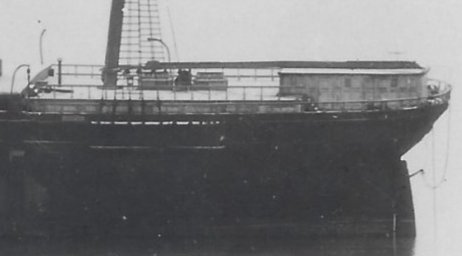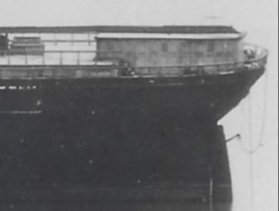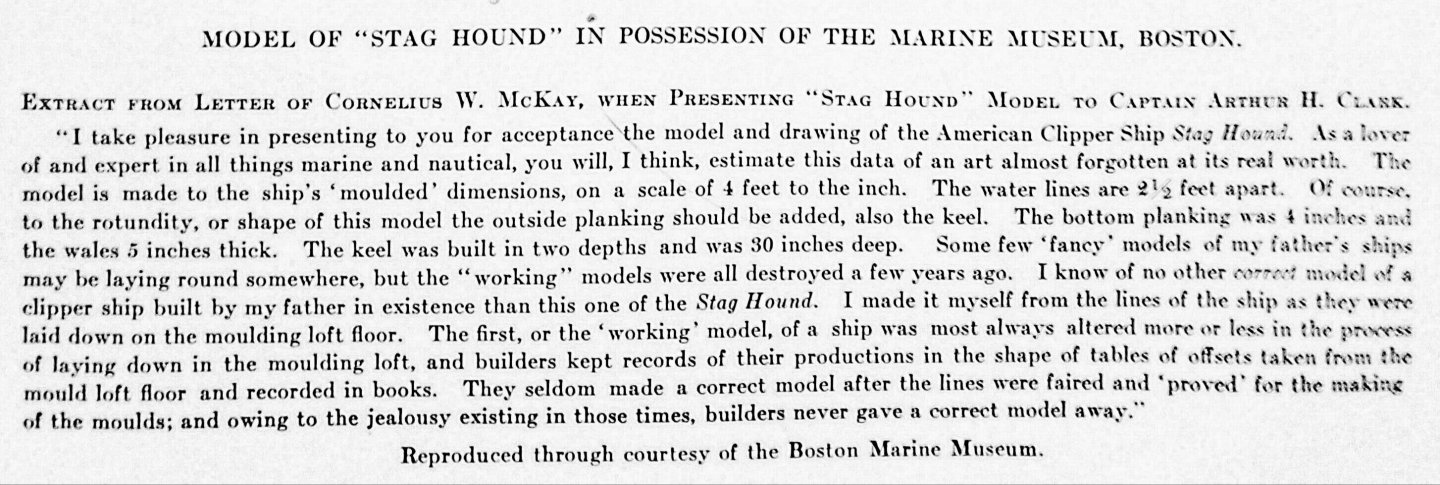-
Posts
2,168 -
Joined
-
Last visited
Content Type
Profiles
Forums
Gallery
Events
Everything posted by ClipperFan
-
One more favorite of mine: "Clipper Stag Hound" original oil by Charles Lundgren, done for the collectible plate series "The Golden Age of Sail." From the detail, it's obvious that as evocative and beautiful as this painting is, the stag hound figure awkwardly projects from the prow and looks more like a bulldog. In addition, there's no navel hoods or cutwater, nor a central portico that can be seen and in fact the mizzen mast appears to be mounted on the poop deck. Still, I love the painting and somewhere in storage I have this collectible along with the entire series....
-
@rwiederrich @Vladimir_Wairoa @Luis Felipe I rechecked Stag Hound mizzenmast diameter and realized that a 30 inch diameter I was working with was incorrect. It's actually 26 inches. That mere 4 inches gives more clearance to the rear portico conceptual rail. Here's my revised sketch, done at 1:48th scale. At least I believe that's the correct scale for 1/4th inch =:1 foot. I used a door design taken directly from one removed from Glory of the Seas.
-
@Luis Felipe welcome aboard! Thank you for the beautiful Stag Hound artwork. I recognize the first and last pieces as those by Cape Cod artist Frank Vining Smith. This is going to be a wonderful project, which is already proceeding quite rapidly. Rob can't wait to start making wood chips fly. Meanwhile Vladimir has been struggling to reconcile the Crothers body plan in order to create computer generated bulkheads. He will most likely do 2 sets at 1:96th & 1:72nd scale once ready. I love the plans you're already drafting. To help you avoid "reinventing the wheel" by revisiting work we've already done there's some items I want to make you familiar with. First our #1 most reliable source for the sheer profile of Stag Hound has been decided. It's the 1:48 scale, 4 feet, 8 & 1/2 inches half hull model crafted by Donald McKay's own son, Cornelius in 1850. He describes in his letter to Captain Arthur H Clark how he literally had access to lofting lines of the actual ship as she was being built. There is no more reliably documented resource. Unfortunately there's no body plan yet found by him, although he says in his letter such a drawing exists. Vladimir overlayed the McKay bow profile onto my reconstructed bow based on the 1881 Henry Hall lines, which were directly downloaded from Google books, so there's no distortion. The other solidly reliable resource is the December 21, 1850 Boston Daily Atlas article written by Duncan McLean. Since Stag Hound was Donald McKay's premier, inaugural extreme clipper and the largest merchant vessel of her type in the world, more specific details than usual were supplied. One such pithy fact is that the center of the mizzenmast was actually 2 feet further away from the fore of the poop deck. It's due to a glossed-over fact that the sternpost had a rake of 2 feet aft! So instead of 5 feet it's actually 7 feet away. Now there's enough room to fit an 8 foot square portico, recessed 4 feet. Here's a link to this fascinating article: http://www.bruzelius.info/Nautica/News/BDA/BDA(1850-12-21).html I look forward to your contributions. I'm still blown away by your fabulous scratch-built tea clipper Sir Lancelot.
-
@rwiederrich good catch on those modifications. It makes sense that they would have been done to add further protection of an aging vessel. What do you think of the idea of a brace around the mizzenmast to prevent it damaging the roof of the portico, since due to rake, it's practically on top of the roof? Is there a disadvantage from not having access to the spiderband supporting the spanker boom? If we make the portico flush, it solves clearance issue but then easy access to that spanker boom is gone. The only other approach is a bigger square portico, surrounding the mizzenmast which would then exit from the rear of the portico roof and everything would rig to it there. There's a painting of the huge, elegantly decorated James Baine dining room where the mizzenmast is actually in the center of the aisle.
-
@rwiederrich exactly the same thing I was wondering about. If you look closely at the starboard image of Glory of the Seas bow, there's a small iron brace to prevent the inner bobstay chain from abrading the cutwater. Would such a similar brace had been employed at the front of the portico to stabilize the mizzenmast and prevent such instability? Just a thought.
-
@druxey sliding doors were what we saw on the front fascia of the rear coach house on Glory of the Seas. Probably because it's safer than swinging doors in rough seas. What makes sense that this is the most likely portico arrangement is that it also gives sailors roof access to the spider band supporting the mizzen spanker boom. A portico further back would make that impossible.
-
@rwiederrich @Vladimir_Wairoa Here's a 1:96th scale conceptual sketch of the rear portico on Stag Hound. Tolerances are tight but it all works. Dimensions: 8 ft square x 8 ft high, with 6 inch fore and aft overhangs and 1 ft port and Starboard overhangs, with 32 inch high surrounding rail and dual ladders. Portico is recessed 4 ft with port and starboard rearward sliding doors. It's located 7 feet away from the center of the 30 inch wide mizzenmast, which has a 1&1/2 inch per foot rake. An alternative would be a flush mounted portico with single front opening door. Let me know if you like this or do you think flush mount makes more sense?
-
@rwiederrich @Vladimir_Wairoa just let me know that on paper Crothers plans are accurate. The problem is photographic distortion. So he's going to see if he can get a more accurate scan. Meanwhile, I suggested he overlay the 1881 Henry Hall lines over Crothers. Not because they're more detailed, as obviously they're not but because they're already scans. I downloaded them directly from Google Books. In these comparisons it's very obvious that the more desirable Crothers body plan has a subtle shift to left while both scans of the Hall plans are Arrow straight vertical. As far as being able to produce accurate bulkheads which align with the Cornelius McKay model, this issue is the only sticking point remaining. So, if anyone reading this can make a clean scan of Crothers from "The American Built Clipper Ship 1850-1856" and post it here. It would be greatly appreciated.
-
@KeithAug welcome aboard! I had the distinct pleasure of being involved with Rob, Vladimir and Druxey in our years long development of the authentic appearance of McKay's final Medium clipper Glory of the Seas. The best surprise of all, which allowed us to take our investigation to a whole new level was direct involvement with author Michael Mjelde. His guidance with rare documents and pictures not even in his books were incredibly helpful. This Stag Hound build is moving at Warp Speed in comparison. Vladimir's struggling with reconciling 3 different interpretations of her body lines but I'm confident we will soon resolve that.
-
@Luis Felipe I sent you a message a short while ago. Apparently you haven't been able to read it. So I'm posting in your finished 1865 Sir Lancelot build instead. @rwiederrich @Vladimir_Wairoa and myself are currently in process of establishing ship's build lines to finally recreate an authentic model of Donald McKay's inaugural extreme clipper Stag Hound. Unless he has corrected it, you can find the build Log under 1851-1881 scratch build logs. Look for @rwiederrich 1850 McKay clipper Stag Hound. We're very near to launch construction. Hope to see you there! "Stag Hound in the Tea Trade" by Cape Cod artist, Frank Vining Smith
-
Rob, Reading exploits of "Jack Tar" really gives you an appreciation for their steely nerves and determination. Actually many clipper ships were known as Hell ships because of the incredibly, insane way ship's captains pushed ship and crew often to the breaking point and beyond. One of the most amazing events involved Captain Lauchlan McKay (Donald's brother) and the maiden voyage of the Sovereign of the Seas. During an October gale the ship lost her main topmast went over the side,taking with it fore topmast, fore yard, every stitch of sail on the foremast and mizzen it the mizzen topgallant mast. Captain McKay emphatically told his entire crew of nearly 100 that under no circumstances was any line to be cut. In a week both topmasts, topsail yards and fore yard were all aloft with sails bent. In 12 days, they completely rebuilt everything as if the disaster had never occured!
-
Rob, Sailors who actually worked these massive clipper ships give really dramatic, first hand descriptions of the hellish conditions they dealt with in manhandling those behemoth sails. A particularly vivid tale involved bringing up a ain topsail, not even the course. It was freezing, sleeting rain, the wind was howling and there was a danger of losing the mast if the sails weren't immediately taken in. Climbing ratlines was treacherous with everything being frozen over. Driving rain nearly blinded the men. Then when they had to fuel the sail, it fought them like a wild banshee with the wind still partially filling it. As the fought to pull the stubborn canvas up, it also became evident it was a frozen sheet of ice too. Meanwhile the mast was swaying back and forth in wild gyrations with the movement of the massive ship below. I remember the sailor saying the slogan one hand for the ship and one for yourself was a lie. Often they had to use both hands to grab and lift the sails. Tragically a man fell to his death as a sudden shift knocked him off the yard. By the time he hit the water the ship had already left him far behind...
-
@rwiederrich Rob, I must admit to being emotionally connected to the lovely Stag Hound ever since I saw the beautiful John Steel painting on the Revell box top. He's one of my favorite artists. It takes quite a talent to portray a ship with such bad deck placement as a house where a forecastle should be and yet make it completely believable. However, it's McKay's second clipper Flying Cloud which is still my favorite. But having that authentic model by Cornelius McKay just makes an opportunity to finally recreate McKay's very first clipper an easy decision. Plus it has the extra benefit of never having properly been done before. I'm really getting excited to see how quickly this is all coming together.
-
Rob explained to me that this conclusion of mine was misguided. I took a look at another illustration of the twin Packet ships Star of Empire & Chariot of Fame drawn by Donald McKay himself. (courtesy of Peabody-Essex Museum, Salem, MA) It includes an internal view of these ship's hulls, including her pitched floors. Conclusive proof that my conclusion was exactly wrong. I so hate when that happens... 🙂 Rob further clarified that due to severe hogging, the bow and stern would both flatten out.
-
@rwiederrich Rob, having such a valuable resource is really an incredible aid in getting an accurate model of Stag Hound. The very first of McKay's amazing line of legendary clippers, built and launched over a period of nineteen years. I'm surprised how rapidly this is developing in comparison to our Glory of the Seas project.
-
While we're discussing the current, somewhat confusing keel depth, I will make a case, both for using the Cornelius McKay model as our premiere resource and for using his specific recommendations of additional feature dimensions to realize full accuracy of Donald McKay's inaugural extreme clipper. Here's the excerpt of the letter McKay's son gave to Captain Arthur H Clark upon presenting him with his precious artifact. Besides his over 4 foot model, he mentioned that there was a drawing too. Anybody out for sleuthing? To complete her full 'rotundity' as Cornelius refers to it, he recommends adding 4 inches to bottom planking and 5 inches to her wales. To which, he also mentions add 30 inches to her keel which is built in two depths. My interpretation for these instructions is that Mr. McKay was describing exact dimensions to realize the full aspects for the basic hull of Stag Hound. So I would set exterior keel depth at 30 inches, believing the two depths he mentions are the shoe (false keel) and keel outside her hull. Second reason why I put full faith in the McKay model is our most authentic source to replicate Stag Hound is the force of his own words describing actions he took. Here we have a precise replica of a ship as she was in the process of construction. Not only that, lines were all literally taken off those on the moulding loft floor. Add in this was professionally crafted (referred to as an only correct "builder's model" in existence) by the builder's own son! To me, this is a gift from the past.
-
While we're discussing location of the main deck, I noticed another important feature from the 1922 port broadside photo of Glory of the Seas beached at Endolyne, sadly awaiting her fiery end. Unlike practically all clipper ship models I've seen, if you look very closely, you'll see her decks are level, not pitched. First look at her forecastle enlargements. Note how the base of her sprayrail is level while the sprayrail itself increases in height slightly as it runs from aft to fore. That's easiest to see when looking at the starboard bow shadow. Now look at her stern. See how both coach house and wheelhouse roofs are also both level? Now, look at the outer rail on turned stanchions. Look carefully at the port side of the wheelhouse. Ever so slightly, the rail raises up from fore to aft while the sidewall of the Wheelhouse remains level. This is most noticeable by comparing the port wheelhouse wall at fore and then at aft. It's subtle but definitely there. From an engineering perspective, this makes more sense. Captains and crew spend months, even years aboard these vessels as their only homes. So it's more comfortable on level decks for them. We've now concluded that the main deck of Stag Hound was 8 & 1/2 inches below her sheerline. I didn't realize that the waterway was sunk 3 & 1/2 inches below the main deck planking. So now, as long as Rob and Vlad agree with me about her level decks, we can locate her main deck from which all distances of her masts are then taken: 50 feet from inside the front stem to foremast center; 67 feet from foremast center to mainmast center; 56 feet from mainmast center to mizzenmast center and finally 42 feet from mizzenmast center to inside of the sternpost.
-
@Vladimir_Wairoa Feels this is the finished Stag Hound profile. Her overall length is 226 feet and her keel is 207 feet, precisely as she's described in The Boston Daily Atlas. We're still working on her 215 feet length between perpendiculars, from inside her front stem to inside her rear sternpost. To accomplish that requires locating her main deck, which is 6 & 1/2 feet below the top of the monkey rail. With 1 foot internal waterways, exterior sheerline should be 1 foot above the deck. Once Rob concurs, it should be a simple matter of dropping 1 foot below that to locate the main deck. That's important since all mast placements are measured on that main deck line. Progress on realizing this beautiful ship is moving along surprisingly rapidly.
About us
Modelshipworld - Advancing Ship Modeling through Research
SSL Secured
Your security is important for us so this Website is SSL-Secured
NRG Mailing Address
Nautical Research Guild
237 South Lincoln Street
Westmont IL, 60559-1917
Model Ship World ® and the MSW logo are Registered Trademarks, and belong to the Nautical Research Guild (United States Patent and Trademark Office: No. 6,929,264 & No. 6,929,274, registered Dec. 20, 2022)
Helpful Links
About the NRG
If you enjoy building ship models that are historically accurate as well as beautiful, then The Nautical Research Guild (NRG) is just right for you.
The Guild is a non-profit educational organization whose mission is to “Advance Ship Modeling Through Research”. We provide support to our members in their efforts to raise the quality of their model ships.
The Nautical Research Guild has published our world-renowned quarterly magazine, The Nautical Research Journal, since 1955. The pages of the Journal are full of articles by accomplished ship modelers who show you how they create those exquisite details on their models, and by maritime historians who show you the correct details to build. The Journal is available in both print and digital editions. Go to the NRG web site (www.thenrg.org) to download a complimentary digital copy of the Journal. The NRG also publishes plan sets, books and compilations of back issues of the Journal and the former Ships in Scale and Model Ship Builder magazines.

